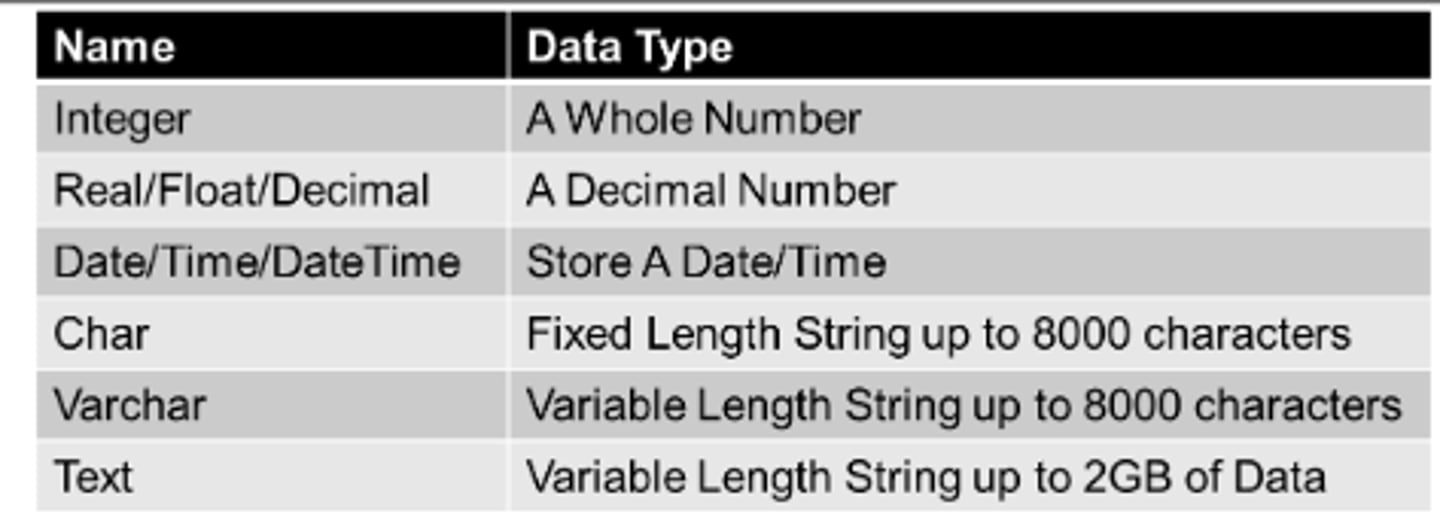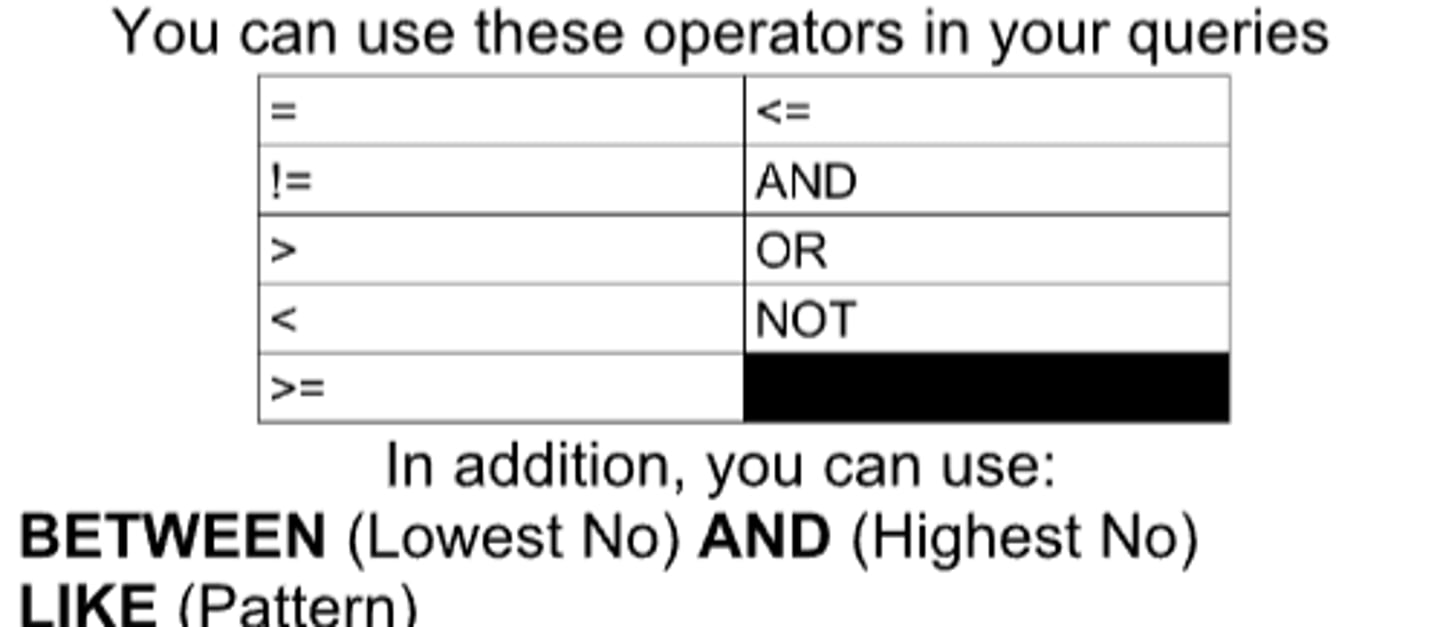3.7- Relational Databases and SQL
1/20
There's no tags or description
Looks like no tags are added yet.
Name | Mastery | Learn | Test | Matching | Spaced |
|---|
No study sessions yet.
21 Terms
Database
A structured and organised way of storing data so it can be retrieved using queries
Table
A collection of related data
Record
A collection of fields about the same person, thing, item or object in a database
Field
A collection of fields about the same person, thing, item or object in a database
Primary Key
A field that stores unique data for each record in a table. These are normally an ID Number
Foreign Key
A field in a table that references a primary key of
another table
Database Data Types

Flat File Database
A single table of data stored inside a single text file. These are often stored using A CSV format
Relational Database
A database that contains multiple tables that are linked together. They allow us to design tables that reduce inconsistencies and eliminate data redundancy.
Relationship
A link between 2 tables. There are 3 types of relationships:

SQL (Structured Query Language)
A language that allows you to create, query, update and delete data to and from databases
Writing a Query SQL
SELECT (The fields that you want to be displayed)
FROM (The table name)
WHERE (The search criteria)
SELECT Field1, Field2, Field3
FROM Table1
WHERE x=yDatabase Reference (Customer)

The SELECT Statement (Quering Data)
Allows you to select the records from a table using the fields of the table. You can either type all the fields that you require or use a wildcard
Example:
SELECT Name, Address,PhoneNo
FROM customer
Wildcard
Allows you to select all the columns of data
Example:
SELECT *
FROM customer
The WHERE Clause
Allows you to select only records satisfying a specified condition
Example:
SELECT Name, PhoneNo
FROM customer
WHERE age = 42
WHERE Clause Operators

ORDER BY Statement
Allows you to sort a query into ascending (ASC) or descending(DESC) order
Example:
SELECT *
FROM customer
ORDER BY Name ASC
The INSERT Statement (Inserting Data in A Table)
Allows you to enter a record into a table
Example:
INSERT INTO customer (CustID, Name, Address, PhoneNo, Age)
VALUES (1006, “Geoffrey”, “Manchester”, 782104, 63)The UPDATE Statement (Updating Data in A Table)
Allows you to update a record (or records) in a table
Example:
UPDATE customer
SET Name = “Simon”
WHERE CustomerID = 5The DELETE Statement (Deleting Data in A Table)
Allows you to delete a record (or records) from a table
Example:
DELETE FROM customer
WHERE name = “Simon”